Roger Penske: The Motor Sport Interview
Now in his eighties, the entrepreneurial owner of Team Penske, IndyCar and the Indianapolis Motor Speedway is not one for wallowing in the past – although today Roger Penske is willing to make an exception...
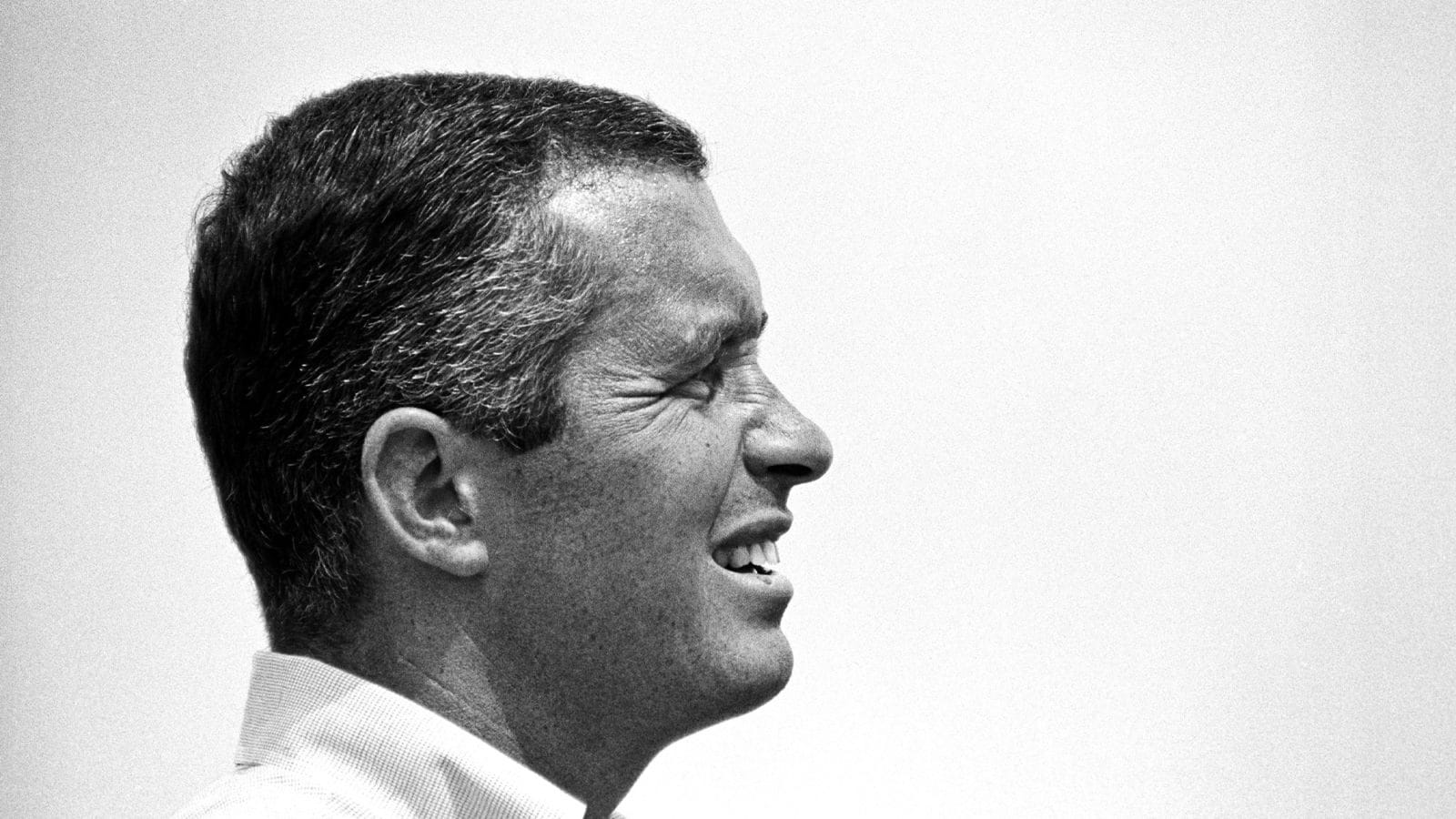
Roger Penske in 1968
Alvis Upitis/Getty Images
Roger Penske is, quite simply, a giant of the sport, a restless and extreme achiever in a fiercely competitive business. He started out as a driver before moving from the cockpit to the pitwall and is now a multiple team owner with over 500 race victories. His business interests and investments include car and truck dealerships and racing series right around the world. His most recent acquisitions, the Indianapolis Motor Speedway and the IndyCar series, make him one of the most influential and powerful people in motor sport while his new partnership with Porsche takes Penske to Le Mans with a shot at victory.
Team Penske has won 18 Indy 500s and shows no sign of being toppled from its pinnacle despite the ever-changing landscape. A man who has eyes only for the future, and who does not dwell on past glories, has never been keen to talk about himself. Motor Sport, however, was shoehorned into his diary for an audience with ‘The Captain’ ahead of the 2021 Indy 500.
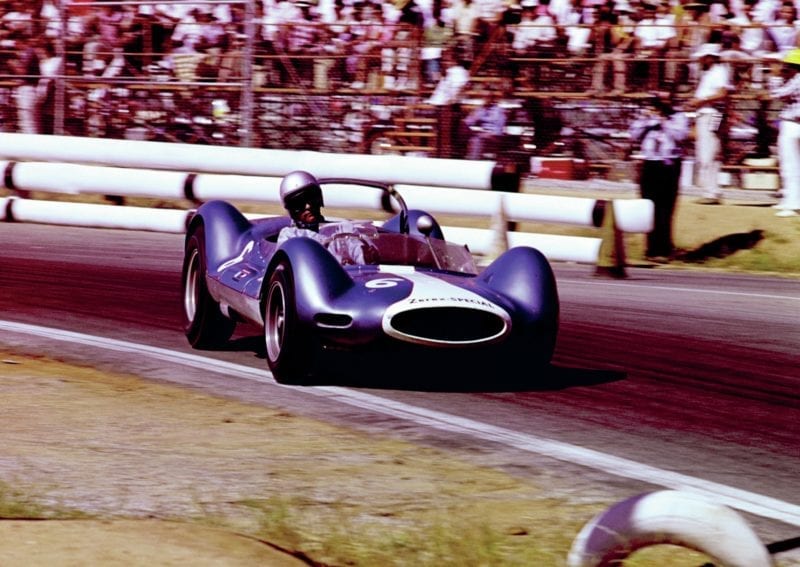
Roger Penske in the Climax-powered Zerex Special at the 1963 Riverside 200 miles – he finished second
Motor Sport: Can we go back in time to 1963 when you were a driver and raced at Goodwood, where this year you will be a guest of honour at the Festival of Speed?
RP: “Sure, I raced a Ferrari GTO for Colonel Hoare’s team although I don’t honestly remember the circuit in any detail. What I do recall is that Colonel Hoare owned Maranello Concessionaires, the Ferrari distributors, which is ironic because we now own the Ferrari store in Egham and we are the worldwide distributors for all the Ferrari classic parts. I certainly never realised, racing at Goodwood, what my future was going to be in the UK, the whole automotive business we’ve built over there. Colonel Hoare took me out to dinner while I was there and, like a dumb American, I asked for iced tea and they looked at me like I was a guy with two heads. I’ll never forget that. It was fun to be racing the Ferrari and it was a fun circuit although I couldn’t draw you a map of it now and I didn’t do very well.”
You had success as a driver but retired early to get into management. Any regrets about hanging up your helmet so soon?
RP: ‘Well, the succession was gradual but I got the opportunity when I was in the Sports Car Club in Philadelphia and a Chevrolet dealer asked me if I’d like to be the general manager of his business. At the time I was making $425 a month and he offered me $2000 so I got my coat and hat and took the job. I told him my goal was that in two years I’d like to buy his dealership… and that meant borrowing $50,000 from my dad who was already retired. He told me, ‘If you lose this money I’ll have to go back to work,’ so that wasn’t going to happen and it was time to give up the driving.
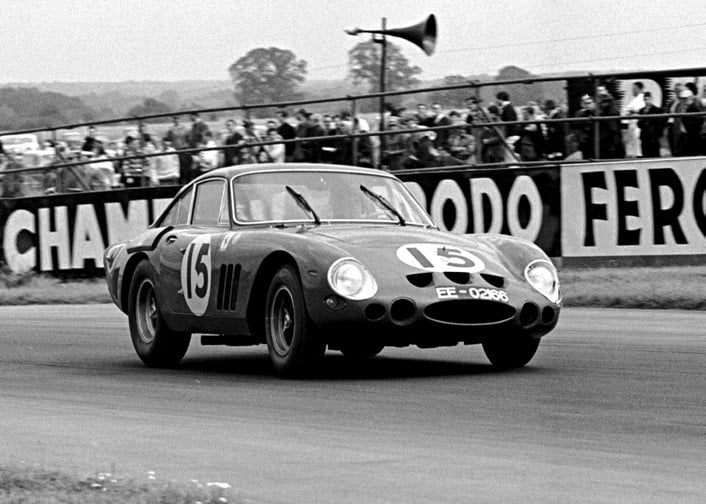
Racing at Goodwood, 1963; Penske returns this year for the Festival of Speed, July 8-11
“You weren’t allowed to be the owner of a General Motors dealership and be a racing driver at that time so I was out of the racing business for a while. One night the deputy vice-president of marketing at Sun Oil came in to buy a Corvette, and during the sale I said, ‘Maybe Sun Oil would like to sponsor a Corvette to run at Daytona.’ He agreed, we shook hands, put a Sun Oil sticker on the car and took it to Daytona so I guess that was my first car I owned as a team. I was on my way back into racing, and Sun Oil stayed with Penske as a sponsor for a great many years.”
The Sun Oil partnership reminds us of Mark Donohue and the mighty Sunoco Porsche 917/30. How did that relationship with Donohue begin?
RP: “A friend of mine told me I should take a look at this young man and I first saw him race an Elva Courier at Lime Rock. I got to know him, I said we should do some racing. He became almost like a brother to me.
“Mark Donohue became almost like a brother“
“In the late ’60s and early ’70s we’d drive the truck to the races together. He would work on the car, sleep nights at the workshop. He was the one who helped build the foundations of Team Penske going forward and it was tragic when we lost him. I try to look at our drivers as family but on the other hand, if they’re not performing, we’ll move on. Very few have left us unless it’s time for them to retire or they have opportunities we can’t offer. I want to be as close as I can to our drivers, forget what the contract may say, to be close to their families and support them however we can.”
Did Mark Donohue in some way set the standard for Team Penske drivers for you?
RP: “He was foundational for us, yes. He brought an engineering touch to the team, and to the cockpit. Mark was special, not just a big lead foot, but a driver who understood the technology, how to make his car better than anybody else’s. That’s why he won so many races. Up to that point the driver would turn up with his overalls, his gloves and his helmet and drive the car, but he wouldn’t know how much camber to put on the right front, what springs to run – and Mark brought all that to the table.
“Now the modern driver has the ability to communicate technically with the team, and he has a commercial capability, because the sponsors are so important today. So there’s more to it than just being fast and winning a bunch of races. We’re looking at the younger drivers because we can mould them into a person who understands our brand, becomes a disciple if you like. If we have three or four drivers in a race only one can win, but if the team wins the others benefit too. People ask who were our greatest drivers. We’ve had so many, and if I start on that I will only leave someone out.”
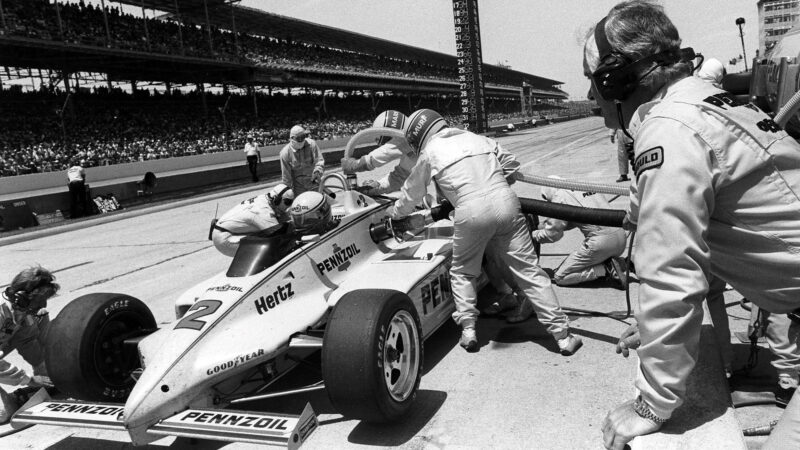
Rick Mears was ever-present for Team Penske at the Indy 500 from 1978-92, taking four victories. This is 1983
Your new partnership with Porsche takes Penske to Le Mans, rekindles memories of Mark Donohue’s success with the team’s Porsche 917/30 Can-Am car and gives you a new challenge.
RP: “Well, I was aware that one of the mountains I had not yet climbed was winning Le Mans and I wondered if I’d ever get the chance. I raced there in 1963 with Pedro Rodríguez in the Ferrari 330 TR, which had won the race the year before with Phil Hill and Gendebien but the engine blew when I missed a shift at the end of the Mulsanne Straight. Jo Bonnier was behind me in a Porsche Spyder, he went off on the oil into the trees and we walked all the way back to the pits together.
“So now I have the chance to go to Le Mans as a team owner and, as you say, our relationship with Porsche goes back a long way. We had great success with the RS Spyder, the 917/10 and the 917/30. I remember testing at Weissach with Donohue when it was just the track and a barn – you go there today and it’s like a small city. This new programme with Porsche, we bring endurance experience to the table, the success we had with the RS Spyder and our results with the Acura cars. It’s pretty special to renew the relationship. We have a year to prepare, and we cannot let them down. The goal is to perform and deliver for Porsche and the racing will support our business as we are the biggest Porsche dealer in the United States, and we have dealerships also in England, Northern Ireland and Italy, so commercially it’s good for us and for them.
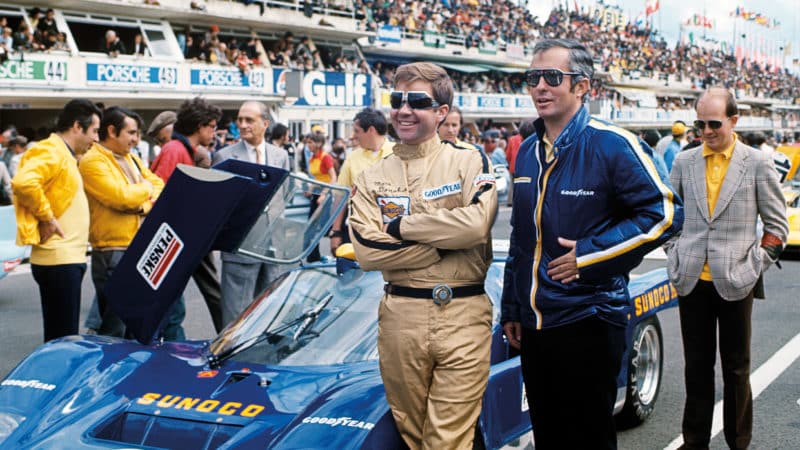
Mark Donohue in world-class sunglasses at Le Mans in 1971 with Penske and the team’s Ferrari 512M. Winning here remains a goal for Roger – and with Porsche Penske Motorsport he’ll get another shot in 2023
Bernard Cahier/Getty Images
How do you assess the current state of IndyCar having bought both the series and the Indianapolis Motor Speedway?
RP: “Well, to go back a few steps, we’ve been involved since 1969. We had issues with USAC and broke away, had our own series, then we came back, so it was up and down for a number of years. In September 2019 Tony George wanted to talk to me about a sale. I thought this was a tremendous opportunity for our company and in January last year we signed the papers to take over the track, the series and the production company.
“Then came Covid-19, we couldn’t run the 500 in May 2020, people stayed home, so no fans and races were cancelled. We didn’t stop investing because we wanted to maintain the iconic stature of the speedway worldwide and deliver the best open-wheel series in the US. However, you can imagine that without 300,000 people at 100 bucks a head a lot of our plans went out the window. We had to invest heavily in the TV production company, the coverage was not up to today’s standards, and over the last year we’ve put $20m into the track to give guests and spectators a far better experience. Sustainability and decarbonisation are part of the mission. We hope to have the speedway carbon neutral within 24 months and we’ve replaced 80% of our lights with LED, taken out 750 paper hand dryers, replaced them with electric.
“On the racing itself, I think IndyCar is better than ever. Thirty-five cars entered [in the 2021 Indy 500], we’re not paying people to run, a new group of young drivers, new teams, and it’s blisteringly competitive. So from a series perspective, the teams, the competition, the rules package and the costs are all in line. Now we need to develop a better balance of ovals, short ovals, street courses and the Indy 500 with 16 or 17 races. Up and down the pitlane very few drivers are buying their rides, there’s more sponsorship and a lot of new young talent.
“We’re looking at hybrid in the next couple of years, a new engine manufacturer alongside Honda and Chevy who are totally committed, and new tracks. This year at Indy we’re restricted to only 135,000 fans – but that’s two Super Bowls. That’s still a lot of people. The whole series gets a lot of benefit from a strong Indianapolis and our fans will never give up their tickets – if they can’t come this year we give them credit for next year and we’ve had minimal requests for refunds. So yeah, IndyCar is strong right now and yes, we are keen to have a Formula 1 race at Indy if it can be accommodated alongside COTA and Miami and if the economics, the commercial aspects, are right for us.”
Talking of Formula 1, you never reached the heights that you have in so many other categories. Why did you stop and would you come back?
RP: “It wasn’t to do with the racing. It was a commercial decision based on the few benefits of us doing Formula 1. We are the last American team to win a grand prix, with John Watson in Austria in ’76, but look… we could have gone back to it but there are only so many hours in a day. I’m a hands-on guy, and I wanted to do what’s best for the company and that’s to focus on racing in the US. So that’s what we did. Formula 1 doesn’t have so much to offer us commercially, for an American team. I mean, racing in the US, we can bring customers and employees to California, to Florida, to Ohio, all over, and we cannot get that benefit from Formula 1.”
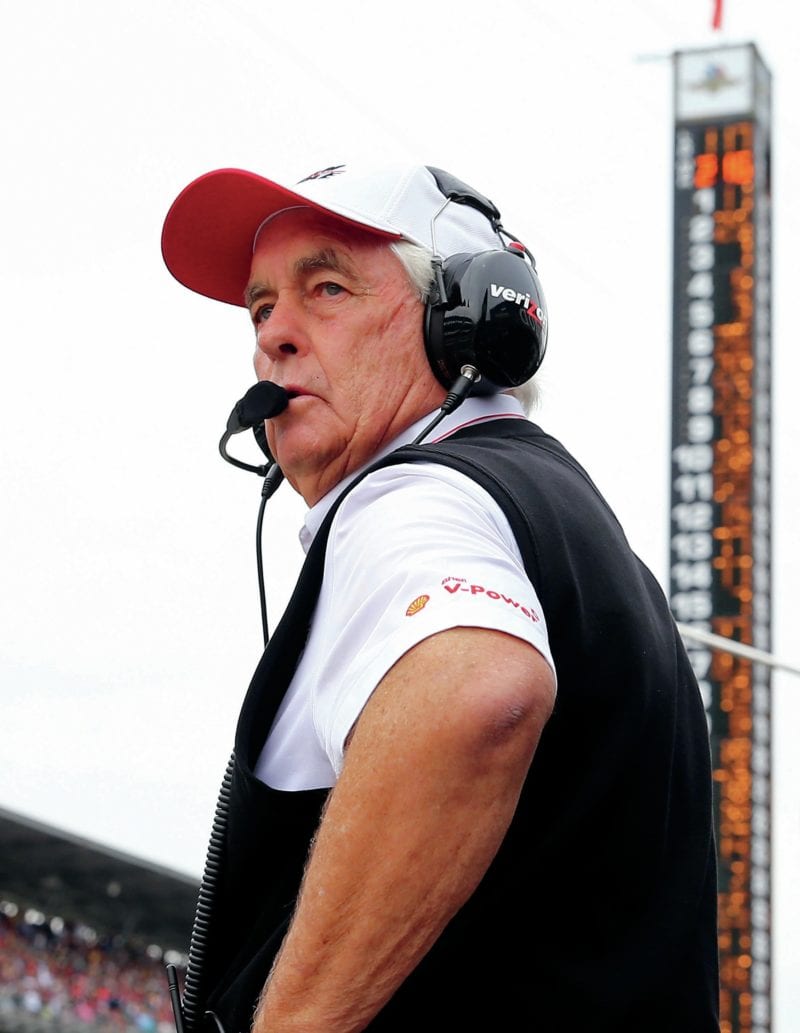
The Captain would like to see Formula 1 back at the Indianapolis Speedway, which last staged the US Grand Prix in 2007
Why have there been so few American drivers in Formula 1 in recent times?
RP: “The opportunities haven’t been there because of the processes in Formula 1. The big teams like Red Bull, Mercedes or McLaren, they start with these kids at such a young age, and they pick from the ones that are coming up through the lower formulae in the European market. I think, actually, that F1 has missed out on some good drivers like Alexander Rossi who did race F1 for a short time. He’s a quality guy, and a very good IndyCar driver. Then there’s Colton Herta, Patricio O’Ward, Josef Newgarden who, given the right opportunity, would do very well.
“Then there’s Scott McLaughlin, who’s one of the brightest and most competitive young men who has ever come our way. His transition from winning championships with us in V8s in Australia, where he helped build the team, to IndyCar has been very impressive. People said we went over there with a boatload of money but that simply was not the case. We built that team with our commercial partners. And, you know, Scott had never driven an open-wheel car but every IndyCar race he just gets better and given time he’s going right to the top. He’s a great team player, 100% committed and he delivers. Scott ticks all the boxes. If these guys can’t get into a top car in Formula 1 they are better off staying in the US.
“Also, I don’t think there are drivers in the US who can come up with the financial support they’d need for F1 where a lot of the drivers are buying their rides. We’ve never had a driver buy a ride with Penske. When I consider a driver, I look at the person, the character, does he have integrity, does he understand our brand? And he has to know how to win. A good example is Rick Mears. He was the one who really helped us build after Donohue. He was good technically and, although he’d rather be in the cockpit than have to stand up in front of people, he got pretty good at that too from a consumer point of view. It always depends who’s available but for us building up a group of younger people is important. That’s how we can sustain our reputation and our winning record. We want to build these people, not just hire them and move them around.”
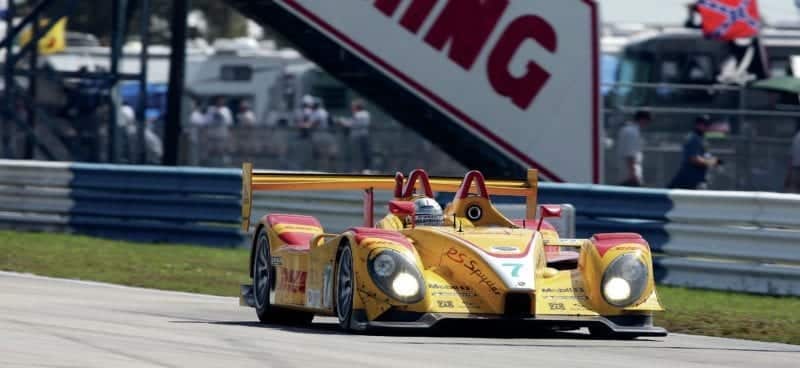
In 2008 at the 12 Hours of Sebring, Penske Racing’s Porsche RS Spyder LMP2 halted an Audi winning streak going back to 1999. Roger will be driving the car at Goodwood
Were you always good at doing deals or was that business acumen something you developed once you stopped driving?
RP: “I guess it goes back to my dad. He always told me, ‘If you need something, say for $10, you go out and raise five and I’ll give you the other five.’ So I worked in gas stations, I had paper rounds, summer jobs in high school, to raise my own money. So it’s in my DNA. One time I worked for the Jaguar importer in Cleveland. We took the cars off the boat, I’d prep them, fit the licence plates and deliver them to customers just so I could drive them round the block. So, yeah, I credit my parents with learning that lesson about making my own money, about how business works.”
You have built a quite extraordinary global automotive and racing business, always seeking new opportunities, but do you get time to look back on these achievements?
RP: “I don’t like to talk about what we have done or haven’t done. I put the numbers up on the board and let other people add them up and make the comments. I relate more to the people I’ve been able to bring together as one team. I like to run a flat organisation and we’ve built our business on partnerships, that’s both internally and with sponsors and business partnerships. Yes, we’ve had success, but you always want more and, being a car guy, a racing guy, there’s nothing like competition to take you forward. In business you get a report every quarter but when you race you get your results every weekend, that’s what’s great about competing.
“When I consider a driver, I look at the person, the character“
“Relationships are so important, whether that be with General Motors, Ford, Chrysler, Porsche, these are all tied to commercial success, same with all our sponsors. I don’t have a favourite car or driver, every individual is important to me. We care about them, we encourage them to do the best for themselves and for the company. I tell them, ‘Make a reputation for yourself, make the company better, and that way you help move the business forward.’
“Most of our people have started from the bottom, we promote from within, and our race drivers have come up through the ranks. All these people know and understand our mission. My job is to get just above the whole operation so I can see the big picture. I can’t wait to get into the office every day, there’s always something going on in racing and in our business. Our success is not just about winning 18 Indy 500s, that’s just a part of the story. It’s about the partnerships and businesses that we’ve generated alongside that. We have more than 60,000 people in the company now, we have over 333,000 trucks on the US highways. This year we’ll sell 600,000 new and used cars. These things take time to build and it’s always about our people.”
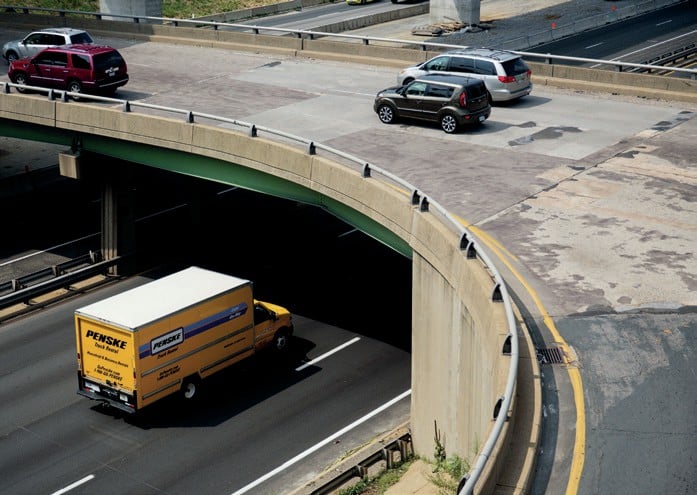
The Penske brand is also well-known in the US for truck rental and many other motoring fields
We’re excited about seeing you and your cars at the Goodwood Festival of Speed.
RP: “Yeah, I’m just embarrassed that it’s taken so long for me to show up at the Duke of Richmond’s front door but we’re excited about bringing some great cars. I’ll be driving our LMP2 Porsche Spyder RS that won at Sebring in 2008, the first time Audi had been beaten since 1999 and Porsche’s first victory since 1988. I’ve driven the 917/30 but I’ve never driven the Spyder before, so it’s going to be a lot of fun. You could help me by sending me a map of the track because I have no idea where it goes. Right now it’s all anticipation and not so much knowledge.”
